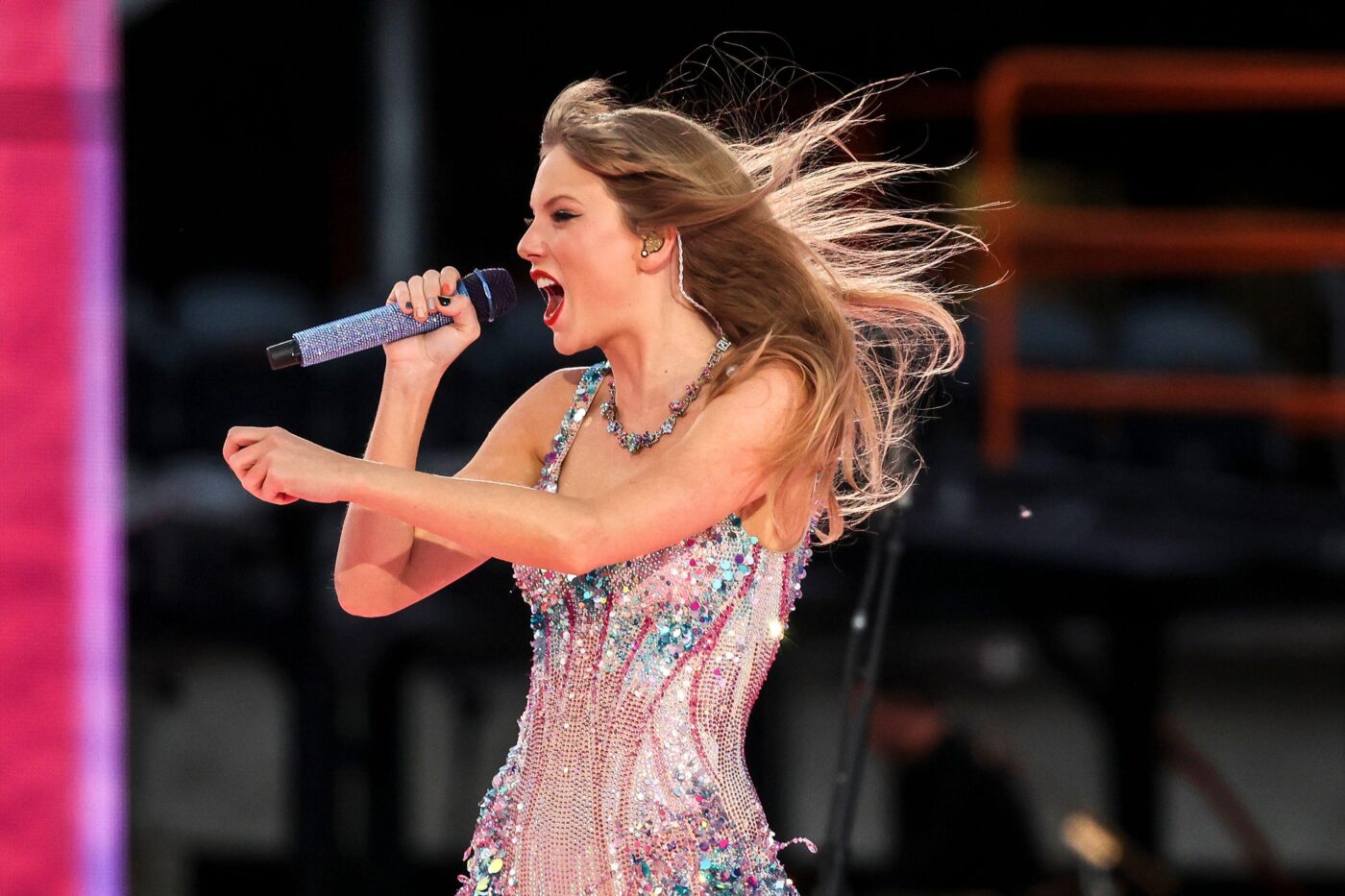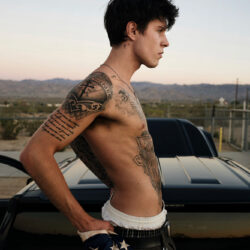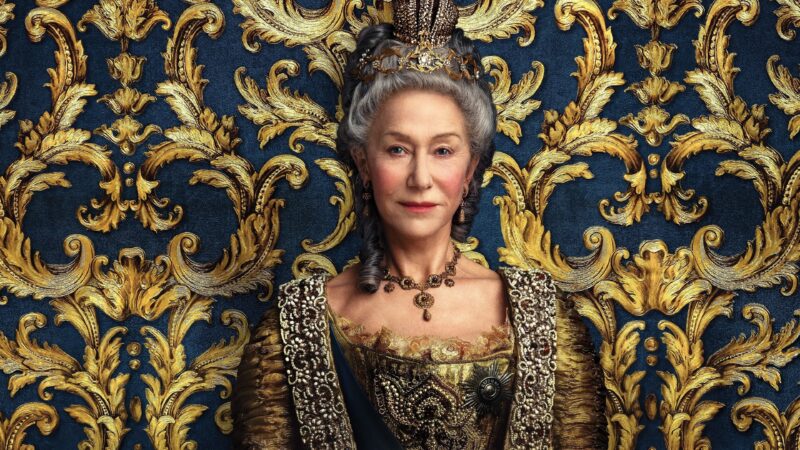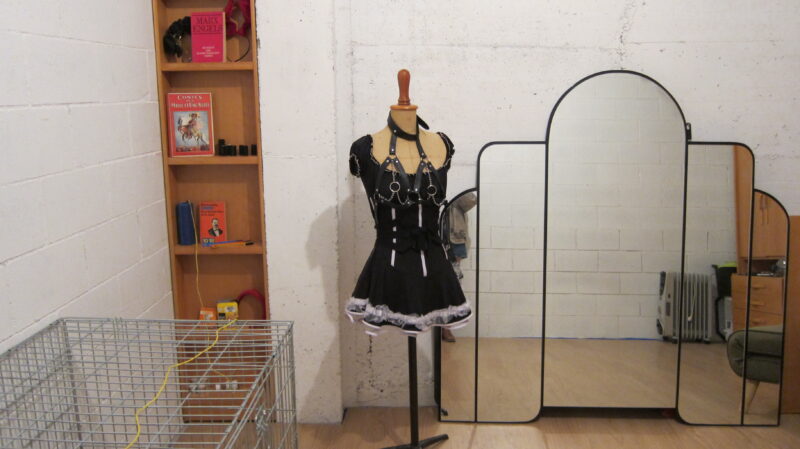This is a story that starts and ends with sex. But the space in between is littered with leotards.
Surpassing all other items of clothing, this humble garment has quietly conquered everyone’s wardrobe from babies, to athletes, to superheroes to, of course, pop stars.
“It’s all sexualization,” concludes Wouri Vice.
And so begins our conversation on the legendary piece of clothing with Vice, a celebrity stylist whose work has spanned from Alicia Keys to Andra Day; and with editorial stylist Memsor Kamrake who has worked his magic at publications like Vibe, Elle and Playgirl.
Yet neither has leaned much on the leotard.
“I used to look at it as lazy. I’d think, they just put anyone in a leotard, throw some bells and whistles on it, and then keep it going,” confesses Vice. “But if you look at it, it really is the evolution of feminine power.” Today, he says “I don’t discredit the leotard at all,” he continues. What a phenomenon it has become. It has created the Nicki’s and the Cardi’s and the Meghans and the Rihannas. It’s the ultimate accessory, if anything.”
The leotard was created by Jules Leotard, a French lawyer born in 1838, who pivoted to a career as an aerial acrobat. Lauded for the ease and grace he brought to death-defying performances, it was ultimately a garment he created that cemented his place in history. Leotard designed several form fitting knitted pieces he called maillots, to enhance his performance and showcase his physique. Crafted from wool and silks, the knitted garments were often black and covered the shoulder and torso, leaving thighs and legs bare.
It would not be until sixteen years after his death in 1870, that other performers, acrobats and athletes began wearing his costume, now called the Leotard after the founder.
By the 1920’s Josephine Baker had elevated it to pop performance wear. The American actress, burlesque dancer and singer, celebrated for her banana costume, quietly kept a canon of tour couture anchored by the leotard. Thinly constructed with sheer panels and sparkling gems, her early take on the leotard rivals what we see on stages today. But it would be decades before her aesthetic was adopted as an item of choice for pop stars of the future. Between 1927 when Baker debuted on screen, to the late sixties, entertainers were generally conservative in their glam. The endless list of stylish singers who graced the stage in those years include Judy Garland, Doris Duke, Lena Horne, Ella Fitzgerald, Rosemary Clooney –all examples of juggernaut singers. Their ensembles of choice were often classic, conservative and glam and heavily featured ankle grazing organza gowns constructed with infinite yards of fabric and sparkles.
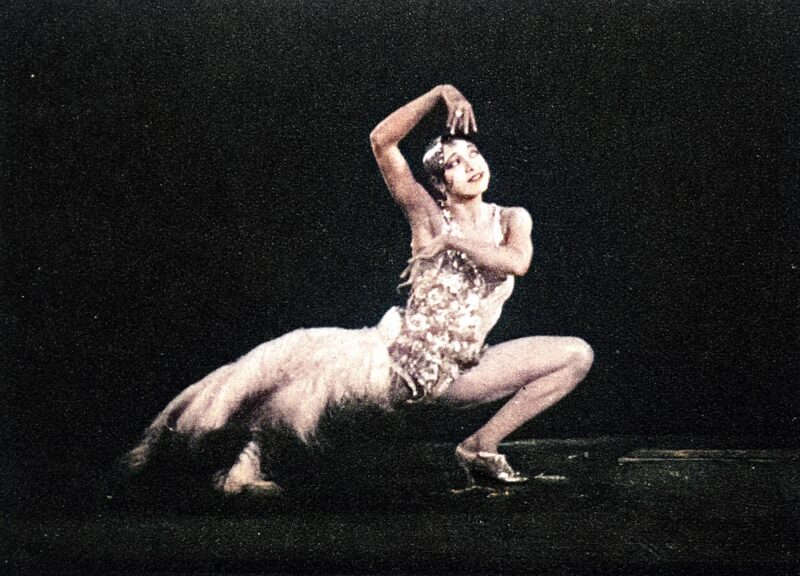
Josephine Baker • Photo: Chronicle/Alamy.
The liberated spirit of the seventies that swept through American society, swept through the American stage too. For pop stars of this era, the range of styles is as breathtaking as the spectrum of music they created. Stevie Nicks of Fleetwood Mac’s folksy rock aesthetic; Joane Baez’s soft hippie style; LaBelle’s futuristic rock ensembles; Aretha Franklin’s increasingly voluminous gowns; and Dolly Parton’s coquette country vibe. “Each of them came to the scene,” says Kamarake, “and if you were to literally just render them as silhouettes, you could maybe see the overlap, but you could see exactly who each one of them was, and you knew exactly who they were.”
Especially Diana and Cher.
This dynamic duo marked the apex of 70’s tour couture. Their luxe, glittering gowns were theatrical creations, hand-crafted by Bob Mackie, the iconic designer who launched his career in Hollywood. In 1974 Tina Turner, now a solo act, transformed this divine duo into the tour couture trinity. Her signature sheer tights, body baring leotards, accentuated her figure, her legs, and her performances. As the seventies melted into the eighties, Tina’s taut arms and toned thighs were very much on trend. By now, actors like Jane Fonda and Olivia Newton John were leading the acrobatic and workout craze with their VHS workout tapes. And across American suburbs Jazzerzice, the high cardio workout program, was taking hold. For the soccer moms and singles now willing to show off their buns and guns, the uniform of choice for such activities: the leotard. Brands like Danskin and Gilda Max soon dominated the market with increasingly bright colored and skimpy leotards, which women wore with crop tops, chunky leggings and headbands.
The trend continued on screen with films like Fame (1980) and Flashdance (1983), which further popularized the leotard. By the late eighties some brave pop stars were translating this trend on stage. Cher famously wore a barely-there leotard set in a sheer bodysuit for her video “If I could Turn Back Time.” Designed by Bob Mackie in 1989 it was the most theatrical and luxurious example of the leotard. Until Madonna debuted her Jean Paul Gaultier Blonde Ambition Tour costume –just one year later. The ivory-colored, pointy cone bra was strapped onto a leotard and paired over pants for a look that was both soft, strong and instantly iconic. As legendary as these moments were for the leotard, they were far and few in between for the remainder of the nineties. By now, emerging artists like Mary J. Blige, Mariah Carey and Eve were exploring new silhouettes. Powered by the energy of hip hop, modern R&B and a class of young stylists like Mysa Hilton, Alexander Allen, June Ambrose and more, tour couture became more sophisticated, aspirational and luxurious.
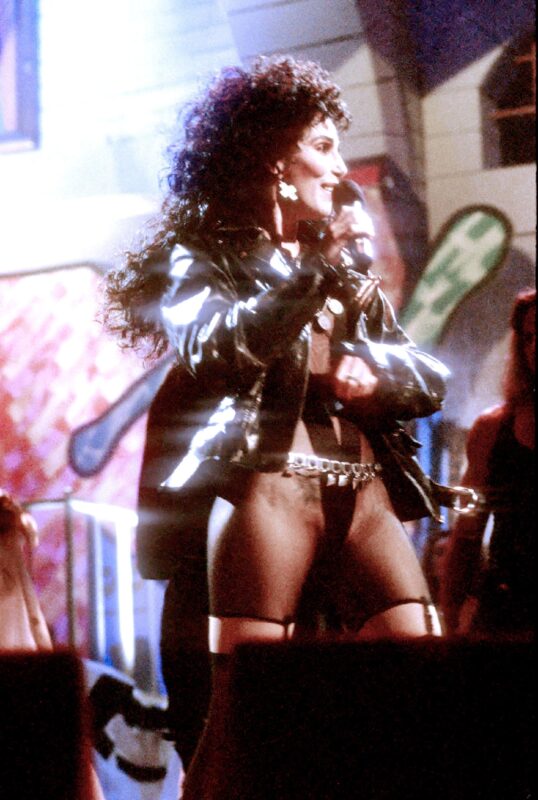
Cher • Photo: Ron Wolfson, Media Punch Inc/Alamy.
And then came the 2000’s.
By then, though many of the early 90’s artists were still topping charts, there was a new generation emerging, with cool one-name monikers like Britney, Christina, Pink, Gaga and, of course, Beyonce. Each of these artists quickly created their own iconic visual markers: Britney’s school girl uniform, Xtina’s Dirty Era, Pink’s rock vibes, Beyonce’s short shorts and white tank and Gaga’s everything.
As top stars of the era, they may or may not have seen Madonna on October 17th, 2005.
That’s when she relaunched the leotard in the cover art and music video for her hit single, “Hung Up.” This moment made Madonna the first mainstream pop star of the era to re-introduce the trend in her performances. As Vox Media’s visual timeline of celebrities in leotard shows, after Madonna’s 2006 Grammy performance, also in a leotard, contemporaries followed in an almost eerie succession: Lady Gaga (2005), Rihanna (2006), Beyonce (2008), Britney Spears (2009), Katy Perry (2009), Kesha (2009), Miley Cyrus (2010), Jennifer Lopez (2010), Selena Gomez (2012), Nicki Minaj (2012), Iggy Azalea (2013), Ariana Grande, (2013), Demi Lovato (2015), Taylor Swift (2015) began incorporating leotards into performances and tours; a trend many continue a full decade later.
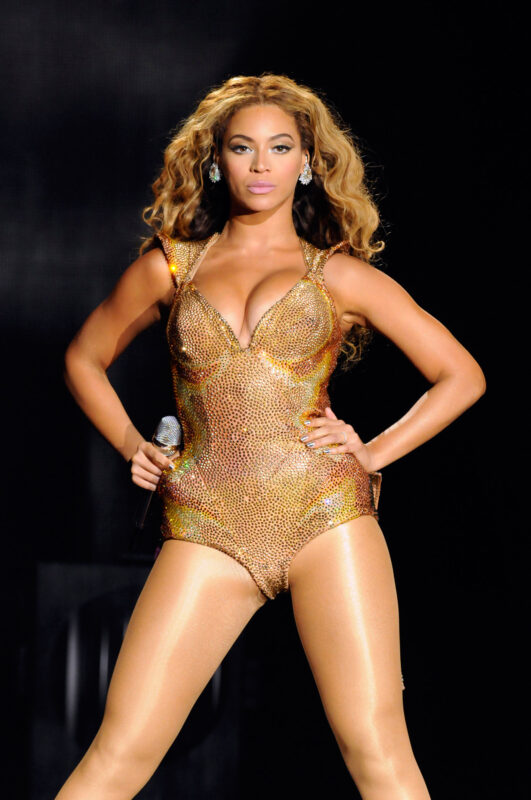
Beyonce • Photo: WENN Rights/Alamy.
Perhaps of this entire class of pop stars, none has owned the leotard more than Beyonce. She first popularized the piece in her iconic 2008 “Single Ladies” video. Inspired by Bob Fosse, Knowles and her dancers naturally opted for simple, black leotards worn by dancers in generations past. By her 2009, “I Am…” tour, the piece was already a staple in her arsenal. Beyonce’s custom collaborations with couturiers like Mugler and Balenciaga elevated the leotard to high art; while providing the rare intersection of comfort, style and sex appeal necessary for this generation’s most energetic performer. Today, under costume designer Shiona Turini, Beyonce has expanded her repertoire beyond leotards to multi-faceted ensembles that accentuate the high impact nature of her performances just as well.
“There certainly needs to be a reimagining of the pop star costume,” says Vice.
Kamarake concurs. “But I think that it’s almost at this narrow door to entry. Pop stars have a starter kit. And so, you can look at the landscape, and it feels like one clone after another. You can cut the girls’ heads off and it’s the same thing.”
From legacy artists like Chaka Khan to 90s icons like Mary and Mariah, to younger pop stars like Sabrina Carpenter, Doja Cat, Sza, Lizzo, Cardi B, Gorilla and more, everyone has adopted the leotard. “It’s become a standard, but it’s not always becoming,” says Kamarake.
So why such staying power? According to our experts, social media plays a huge part. “The lowest common denominator tends to happen,” says Kamarake. “Oh, looking over the fence of what folks are doing, everyone’s able to compare and contrast, and this becomes a new norm.” For Vice, the need to hit this bottom line also plays a part. “That pressure is very real,” says Vice. “The music is what has to sell first, right? Gotta sell that! But also in the same breath and same token, there has to be an image that is attached,” says Vice. “Hyper sexualization is what draws people’s attention, and I don’t think it’s purposefully done. But the reality is that we have so many images that cross our paths in a day from social media. How can I get your attention? What’s going to make you look? No, it’s not every single pop star -but it’s enough to maintain the piece’s dominance.” And its influence.
Today audiences are responding to tour couture like never before. Tours have become the new fashion show where audiences wear thematic outfits in response to the album, or even the dress code suggested by the artist. Thus, in the twenty years since the leotard has become entrenched as the go-to pop couture, the garment has trickled from the stage to the stadium to the sidewalk. “It’s kind of like Miranda Priestly and the color blue that Cerulean Blue,” explains Vice, referencing the iconic fashion film, The Devil Wears Prada. “It didn’t just come out of nowhere, you know?” And just like the color, a garment birthed in a rarefied space has found its place in the mainstream. Today you can spot a leotard just as easily on the steps of an apartment building as the steps of the annual Met Gala, which was held this past May. That evening pop stars, actresses and influencers alike were celebrating structure, style and suiting. And for many the suit or gown of choice was a leotard. Celebs like Sabrina Carpenter and Taraji P. Henson opted to go pantless in custom pieces inspired by the theme. Reflecting on the resplendent representation of a garment once reserved for acrobats, Kamarake’s only says: “It’s left the gym!” Indeed –and landed permanently in the heart of pop stars and general populations worldwide.

Taylor Swift • Photo: Shanna Madison, Chicago Tribune/TNS/Alamy.

